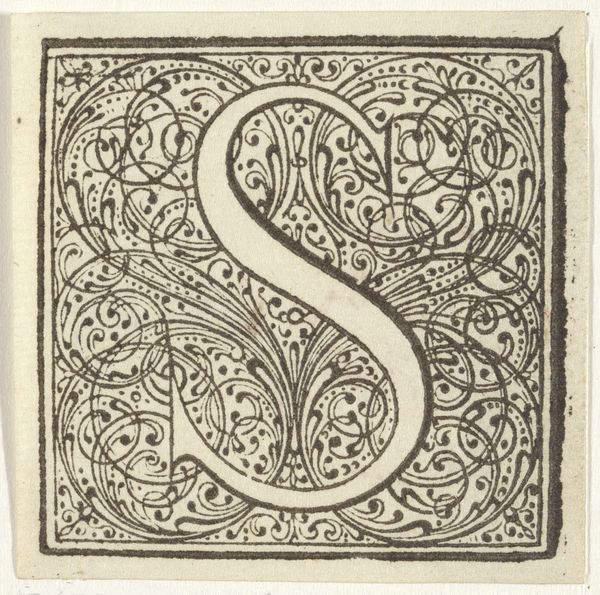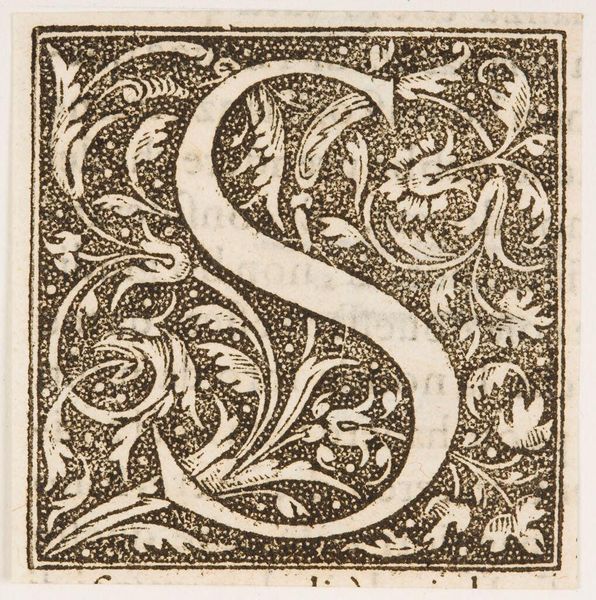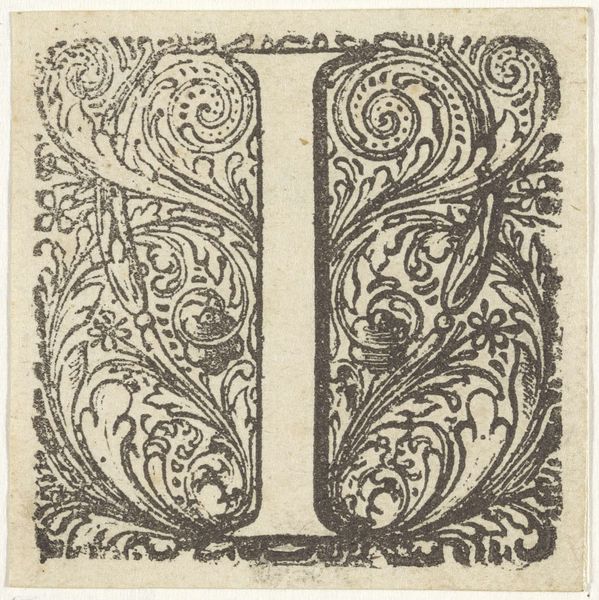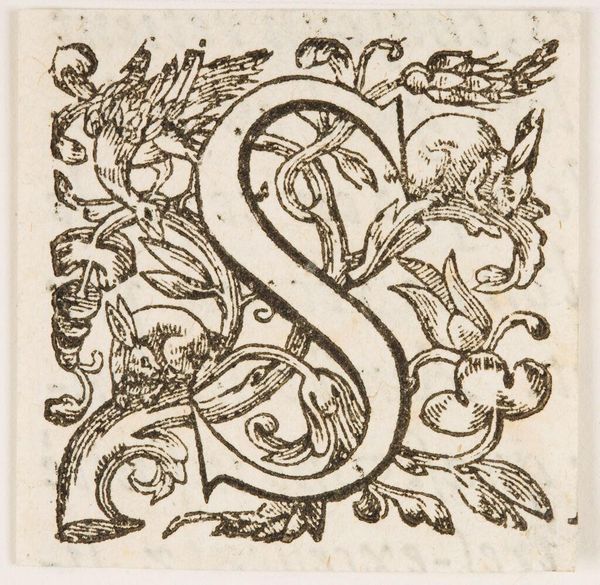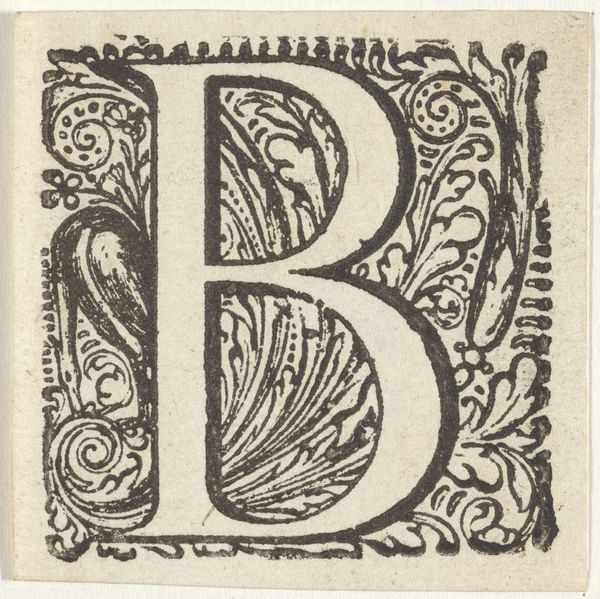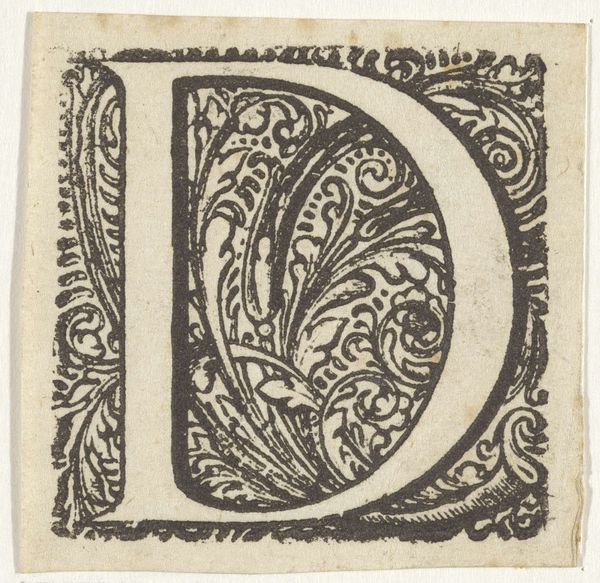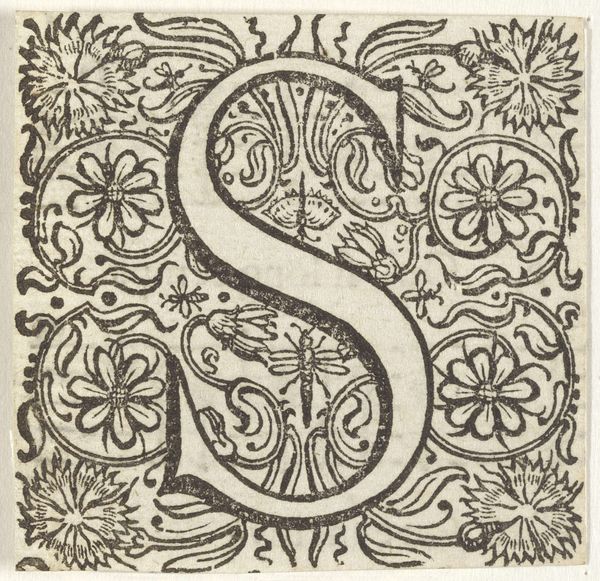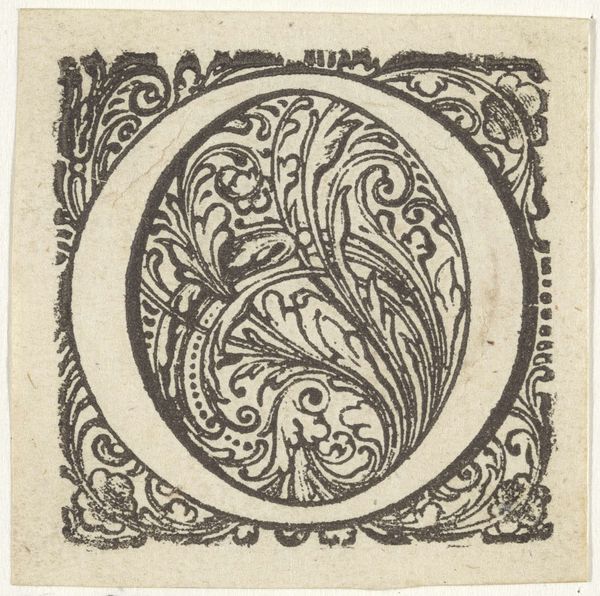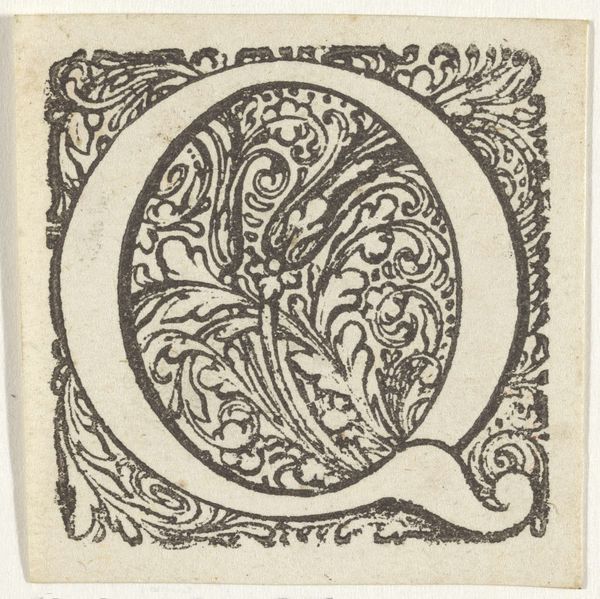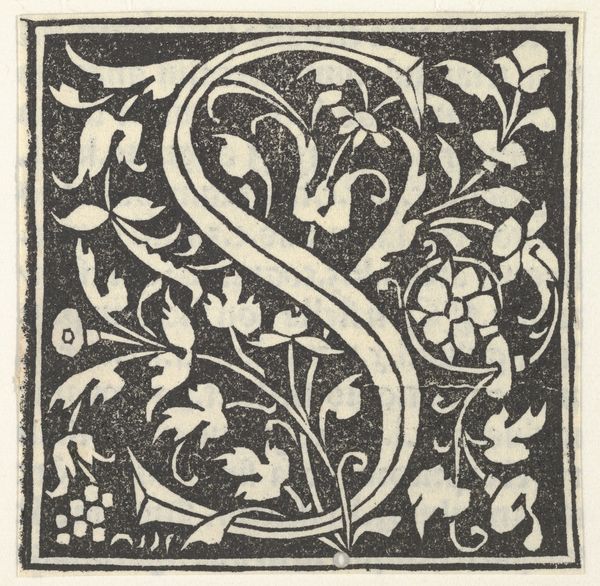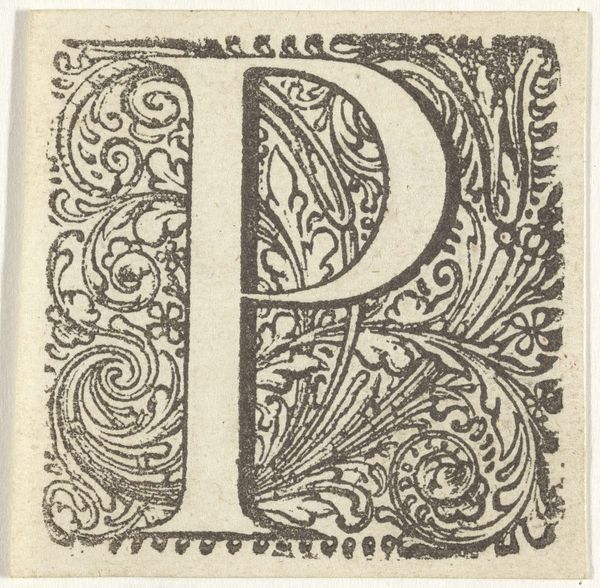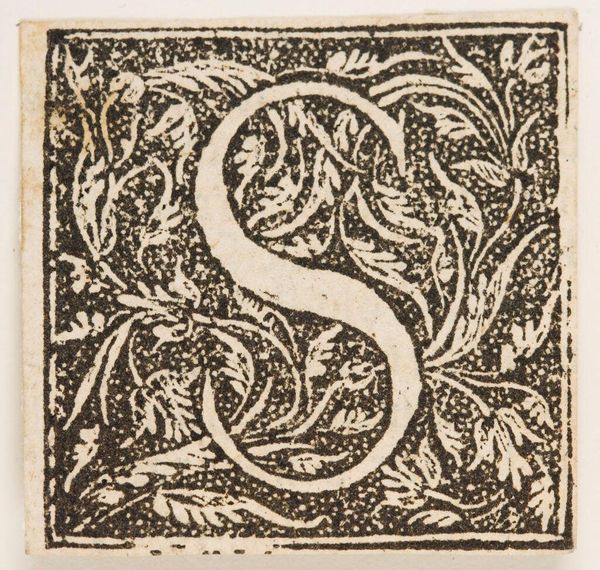
graphic-art, print, engraving
#
graphic-art
#
medieval
#
pen drawing
# print
#
form
#
line
#
engraving
Dimensions: height 51 mm, width 51 mm
Copyright: Rijks Museum: Open Domain
Curator: This engraving, titled “Letter S in een geornamenteerde omlijsting,” meaning “Letter S in an ornamented frame," is estimated to be from the 17th century and is by an anonymous artist. Editor: The density of the line work really strikes me; it feels incredibly labored, almost obsessive. You can sense the slow, meticulous hand involved. Curator: Right, and that laborious process is important when we consider its social function. Think of literacy rates in the 17th century. This isn't just a letter; it's a symbol of knowledge and power, a visual marker of inclusion in a privileged class. The ornamentation around the letter only adds to this feeling, a dense, baroque style frame elevates this S into something very intentional, with both social and symbolic intent. Editor: It's interesting to consider the actual process of engraving, especially as we contrast it with digital design today. Imagine the time invested to achieve the uniform strokes. The act of engraving was demanding – and what does this say about this piece’s value then versus how it might be appreciated today? Curator: Absolutely, and let's not overlook the decorative flourishes themselves. Those aren't simply aesthetic choices; they echo broader cultural trends of the time. Floral motifs in particular are often intertwined with gender and class. Consider how the 'feminine' floral patterns intersect here with this symbol of patriarchal authority. It's this type of contrast that exposes interesting dialogues. Editor: The tension between these refined ornamental designs and the social statement embedded within them creates a tangible experience that is clearly rooted in craftsmanship and meticulous artistic creation. I’m left to consider, also, how this ‘S’ functioned: as a component in the making of other printed work or something more isolated in its original artistic merit. Curator: Indeed. Engaging with an image like this compels us to consider its complex historical and social contexts. Who was this intended for? What power structures did it reflect and reinforce? How do these considerations change its meaning now? Editor: Right. Looking at it again, I feel like my understanding shifts. I started by seeing the surface of a crafted engraving but, thinking more materially, and as we just discussed, I can see how labor is central to unlocking how we engage with an artwork, and that alone makes it endlessly valuable and timeless.
Comments
No comments
Be the first to comment and join the conversation on the ultimate creative platform.
